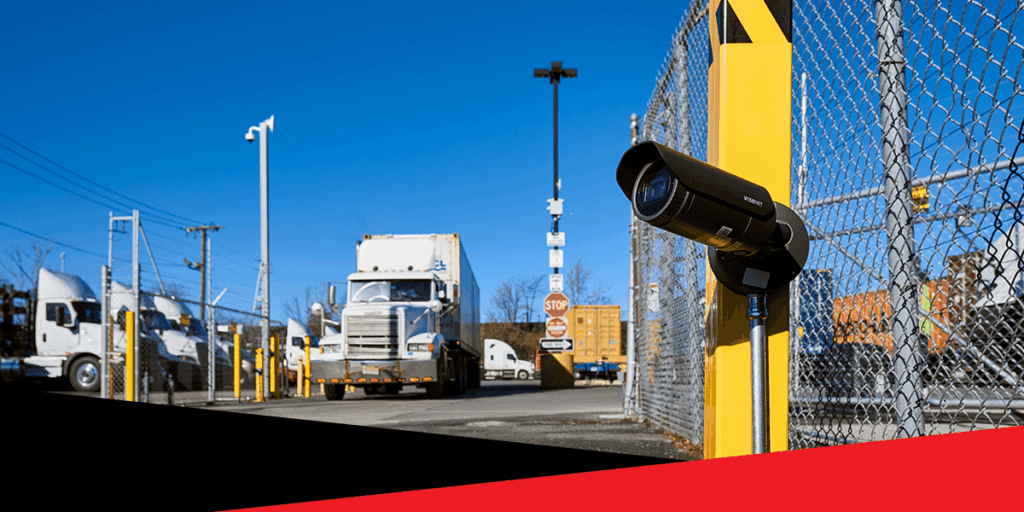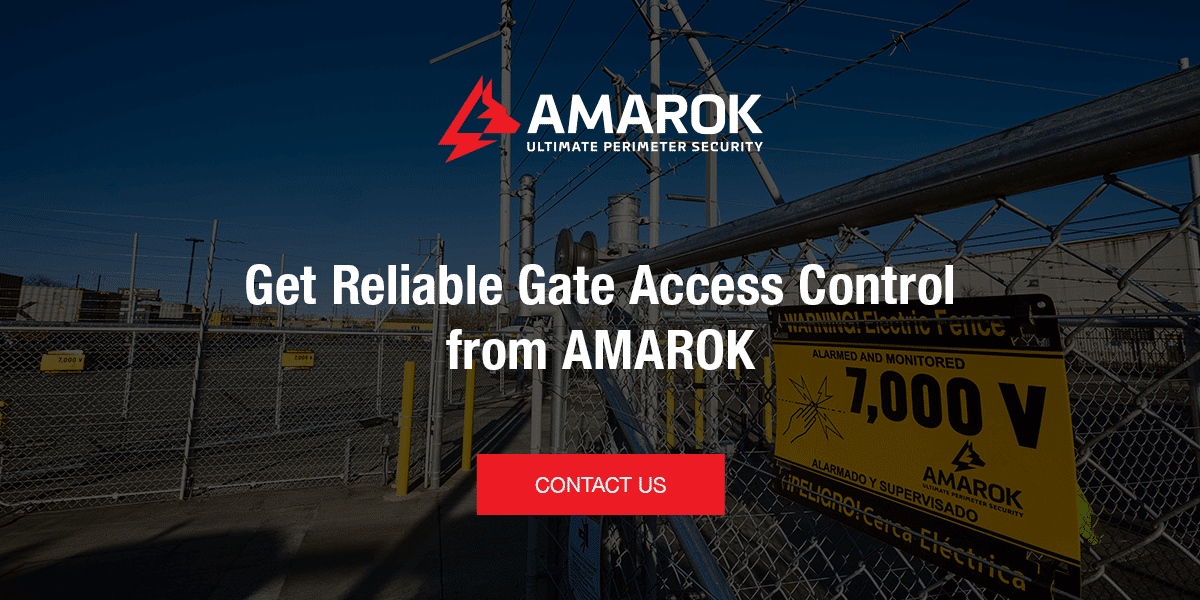Access control systems manage who can enter or exit a facility, when they can do so, and through which portal. These systems may include keypads, card readers, intercoms, or gate arms, and are sometimes used as stand-alone solutions to control entry. While access control plays a key role in perimeter security, relying on this method alone can create vulnerabilities.
In high-risk commercial environments, access control-only approaches often fall short. Whether due to human error, broken access controls, or lack of integration, isolated systems can easily become weak points when they are not supported by a multi-layered security strategy. Understanding where these systems fail is the first step to building a more secure perimeter.
What Causes Access Control Failure?
A 2024 study on property crime across the United States reported nearly 7 million incidents of property crime the previous year. Motor vehicle theft increased by 12.6% in that time. In many cases, the root cause of these crimes is thieves gaining access to properties and buildings. Failures often stem from outdated systems, poor oversight, or inconsistent processes. These breakdowns can expose access control vulnerabilities that threaten safety, operations, and profitability.
Human Error
Even well-trained employees can make mistakes. Granting access based on familiarity or verbal requests, skipping identification (ID) checks, or misidentifying personnel can all lead to unauthorized entries. These errors often occur under pressure or during shift changes. Employees assigned to monitor access points without formal training on protocols, escalation steps, or system functions are also more prone to human error. Unclear guidance or high staff turnover can also result in inconsistent procedures, increasing the risk of mistakes.
Weak Password Policies
Access control systems that rely on easily guessable passwords or PINs can be compromised by reused credentials, shared logins, or infrequent updates. Without requirements for complexity, like two-factor authentication or expiration, these credentials can remain vulnerable for long periods. When access credentials are rarely reviewed, problems occur. Old credentials remain active when employees leave or roles shift. Contractors, vendors, or temporary staff often retain access longer than necessary, increasing system clutter.
Software Vulnerabilities
Unpatched, outdated software or unsupported platforms may have bugs or compatibility issues that interfere with access functionality. When firmware updates or security patches are delayed, employees and stakeholders can find issues with authentication or logging. Should access control not sync with other tools like scheduling software, human resource (HR) systems, or surveillance feeds, manual intervention is required. These issues slow response times and increase the administrative burden on staff managing entry points.
Inadequate Monitoring
Facilities without active monitoring can’t verify access events in real time. If a badge doesn’t scan or a gate malfunctions, the issue may go unnoticed and can lead to systems failing in detecting unauthorized access attempts. Gaps in visibility often occur during after-hours operations or shift transitions. Sites with static access rules may also struggle to adapt to evolving operational demands. A rigid schedule can block authorized personnel after hours or grant access to areas no longer in use.
Risks of Access Control Failure
Access control isn’t just about who gets in — it’s about what’s at stake when the system breaks down. Inadequate or inconsistent access control can expose a facility to a range of costly consequences that affect people, operations, and reputation. These risks highlight why reliable access management is critical to any commercial operation:
- Data breaches: Access control failures can expose sensitive areas that house customer records, financial data, or operational systems. If unauthorized individuals enter these zones, they may access confidential information. In industrial environments, compromised control rooms or servers can impact system integrity.
- Financial losses: Unauthorized access leads to theft, vandalism, or operational disruption. Equipment damage or loss can stall production, increasing replacement costs, and repeated incidents can raise insurance premiums, shrinking margins.
- Reputation damage: Frequent breaches or poorly managed access control undermine confidence in site security. Customers, stakeholders, and employees may hesitate to trust a facility that cannot manage its perimeter.
- Legal consequences: When unauthorized access results in injury, data loss, or theft, businesses can face legal scrutiny. Regulatory bodies can impose fines for noncompliance, especially if access policies fall short of industry standards. A lack of documented procedures or audit trails can also complicate legal defense.
How Multi-Layered Security Addresses These Vulnerabilities
A well-designed Gate Access Control system helps eliminate the gaps that lead to operational and security failures. However, access control is only effective when it’s part of a multi-layered security strategy that starts with the perimeter.
Electric Fencing
An electric fence is the first line of defense, serving as an intimidating barrier that clearly defines property lines. For example, The Electric Guard Dog™ Fence delivers a safe but memorable 7,000-volt pulsed shock every 1.3 seconds when a would-be thief attempts to breach it. Electric fencing also comes with visible signage, adding a psychological deterrent to the first layer of your multi-layered security strategy.
Video Surveillance
Adding video surveillance gives stakeholders visibility in vulnerable areas and perimeter zones. While the cameras alone don’t prevent crime, video footage supports faster response from the authorities and aids in investigations. Products like AMAROK’s FORTIFEYE™ commercial video surveillance integrate with the electric fence. Should the fence alarm trigger, cameras will turn to where the intrusion attempt takes place, alerting the monitoring team for verification.
Gate Access Control
Controlled Gate Access Control points log site entries and exits. Options like gate controls, badge access, audit trails, license plate recognition, and AI cameras allow stakeholders to restrict access by role, location, or time. This flexibility lowers the risk of access control-only failures while boosting internal accountability, making it especially useful for logistics, trucking, manufacturing, and other high-traffic sites.
Combining Gate Access Control and electric fencing offers a strong return on investment by eliminating the need for on-site security guards, saving companies thousands of dollars annually.
Get Reliable Gate Access Control from AMAROK
Access control is a critical component of perimeter security, but it can’t stand alone. Breaches caused by human error, outdated credentials, or system failures go unnoticed until after an incident occurs. For commercial sites, the cost of these oversights, whether financial or operational, is too high to ignore. That’s why more operations are moving beyond single-layer security. By combining access control with additional layers of perimeter security, businesses can close the gaps, improve visibility, and take control of their site’s entry points with confidence.
AMAROK has helped over 8,000 customers with turnkey perimeter security needs. We have ample experience in taking businesses in various industries from access control failure to becoming one of the 99% who experience zero external theft after installation. We offer security-as-a-service, meaning you pay only a manageable monthly fee with zero upfront installation costs and no additional monthly insurance premiums.
Schedule your free threat assessment today and let our perimeter security experts identify potential vulnerabilities and use your local crime data to develop a proactive, multi-layered approach to preventing theft and security failure for your business.





